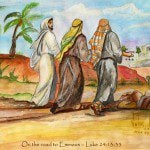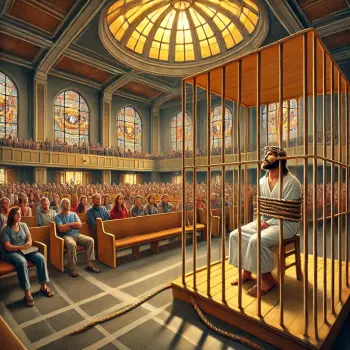Confronted by Tucker's beliefs, many elders now considered issues they had not encountered, much less resolved, before their missions. Elders with little Church experience were particularly susceptible to Tucker's visionary teachings. Caught up in his enthusiasm and conviction, they were perhaps unprepared to determine whether or not the spirit Tucker instilled in them was the true spirit of missionary work by which they should guide their own efforts. Missionaries also did not always realize that in considering Tucker's ideas they were courting apostasy. Marilyn Lamborn, the sister missionary who had first met Tucker in Geneva, later admitted: "I was just thrilled with my new knowledge. I'd write home and say these beautiful doors were being opened to me. I guess my letters must have sounded crazy. I really didn't think I would ever have to give up my beloved church. I didn't know I was headed in that direction."
Elder Tucker held great sway over the entire Paris corps of elders as well as many others throughout the mission. One estimate is that a third of the 130 missionaries in the French Mission eventually came to be in sympathy with Tucker. According to another source about thirty of the missionaries could have been considered firm believers. Under his influence, missionaries began to study rather than proselytize, and some began to wear only the "old style" temple garments.
Loftin Harvey, as yet unaffected by the Tucker faction and their teachings, was transferred to Marseille in the winter of 1957-58 just as Tucker was leaving for Herstal. It was in Marseille that Harvey first indirectly encountered Tucker's doctrines. Harvey was the senior companion of J. Bruce Wakeham, Tucker's California double who in spring would be appointed to join Tucker's Paris group as a traveling elder. That winter Harvey and Wakeham worked in Marseille with Elder Bob Johnson and his junior companion, Wayne Cheney. During a testimony meeting of the four elders and sisters Marilyn Lamborn and Wanda Scott, Cheney professed belief in the Adam-God theory, a doctrine no longer taught in the Church. Johnson, his senior companion, objected vehemently. Before the confrontation came to blows, as Harvey suspected it might, he took control of the situation, trading junior companions with Johnson until tempers settled.
In the meantime, Johnson, an ardent admirer of Joseph Fielding Smith, wrote to him concerning the incident. Word eventually got back to President Christensen that something was amiss in Marseille. In April 1958, he sent Tucker to investigate. Tucker made several visits in April and May, each time assuring the president that the situation was in hand and that the missionaries had been counseled not to study things that they could not understand. The president did not yet realize that the person assigned to resolve the problem was the source of the problem.
Having preceded Tucker into the mission field by four months, Harvey had never been openly approached to share in Tucker's teachings, even by Wakeham in Marseille. Favorable reports and personal acquaintance reversed his initial negative impression of Tucker. In fact, Harvey was deeply moved when, during a testimony meeting, Tucker called him forward to speak on the principle of fasting. Harvey had been fasting secretly and took this request to be more than a coincidence. Yet Harvey had no doctrinal ties to the Tucker faction.
In May, Harvey was transferred from Marseille to Mulhouse and in August to Nancy. Little did he anticipate that the Adam-God controversy in Marseille was the warning breeze before the tempest.
While attention was focused on Marseille, the affair smoldered more dangerously in Paris, emitting fumes that would soon expose its presence to Church authorities. Elder Shore, having returned to Utah, eventually made good on his promise to Tucker. He perused Salt Lake bookstores and among other items, purchased Priesthood Expounded, a doctrinal polemic presenting beliefs held by the Church of the Firstborn. This church, organized by the LeBaron family in Mexico, claimed priesthood authority superior to that found in the LDS Church and also propounded the necessity of practicing polygamy. Tucker was very impressed with the book's arguments (Silver 1961, 5). He and Sister Lamborn typed excerpts from the literature and that July circulated them to other dissident missionaries.
The serious-minded new Paris recruit, Ron Jarvis, requested more information directly from Ervil LeBaron in Mexico. It arrived in late July. In the meantime, Harvey Harper, a missionary from Bakersfield, California, was appointed as his senior companion. The two jointly considered the material. Jarvis recorded in his journal, 2 August 1958, their efforts to receive guidance:
Upon deciding to retire last night we were discussing plural marriage, and upon Brother Harper's suggestion, we read the 132nd Section of The Doctrine and Covenants and then asked the Lord for a testimony of that principle. We took turns praying and after being plagued a bit by the presence of evil spirits the light of the Holy Ghost fell upon me and I received a testimony of the truth of that principle. Brother Harper could not seem to feel the same assurance which I felt and on several more attempts to pray we finally retired about 200 AM after praying for two hours.




